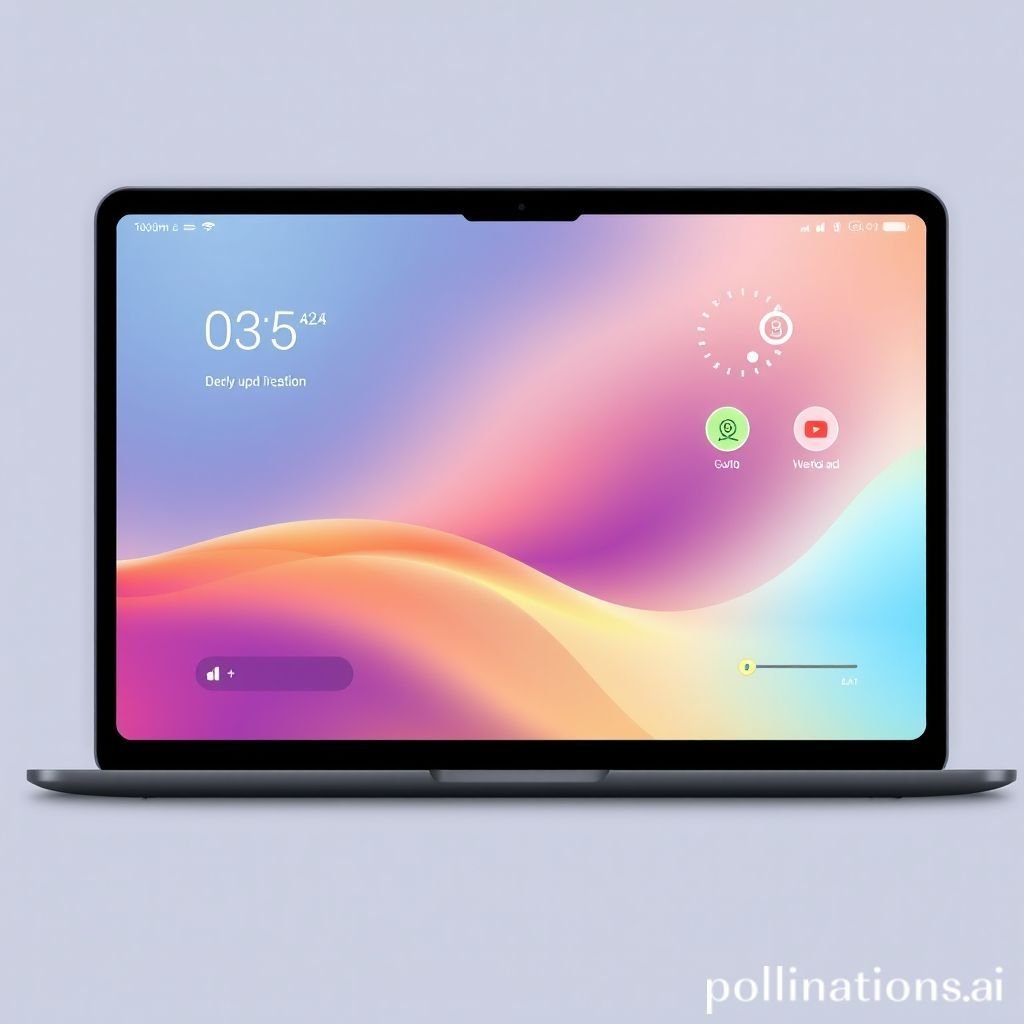Enhance UI/UX: Smooth UI Transition Sound Design
In the intricate world of digital product development, user interface (UI) design stands as a pillar of success. Beyond the visual aesthetics and intuitive navigation, a crucial yet often underestimated element is sound. The "smooth UI transition" sound effect is a prime example of how subtle audio design can profoundly impact user experience (UX). These understated auditory cues provide immediate feedback, enhance a sense of polish, and guide users through an application or system with an almost imperceptible grace. From mobile apps to sophisticated software dashboards, the thoughtful application of these gentle sonic shifts makes interactions feel natural, responsive, and utterly engaging. Understanding the nuance of such a UI sound effect is vital for any developer or designer aiming for a superior user experience.
Applications in Media
The integration of smooth UI transition sound effects spans a vast array of media, acting as a silent narrator guiding users through digital journeys. These subtle audio effects are not merely decorative; they serve a functional purpose by confirming actions, indicating state changes, and providing an overall sense of responsiveness within the UI.
Industry-Specific Uses
In the gaming industry, smooth UI sounds are indispensable. They punctuate menu navigation, confirm selections, indicate loading screens, or signify the opening and closing of inventory panels, making the UI feel fluid and immersive. A gentle whoosh sound might accompany a character entering a new area, or a soft click confirms a spell selection. For mobile applications, a distinct yet unobtrusive UI transition sound enhances the tactile feedback of touch interactions – a subtle "pop" when a notification appears, a soft "swipe" sound as you move between screens, or a gentle fade-in audio cue for new content loading. These auditory confirmations reduce user frustration by clearly indicating that an action has been registered.
Software and web UI also heavily rely on these effects. From productivity suites where a file saves to e-commerce sites where an item is added to a cart, a well-placed UI sound effect provides reassuring feedback. Imagine a soft "ping" when an email sends successfully, or a gentle "slide" sound as a sidebar menu smoothly extends. Such audio cues are particularly important in complex UIs where visual feedback might be delayed or less explicit. Even in virtual reality (VR) and augmented reality (AR), expertly crafted smooth UI sounds are critical for grounding the user and making virtual interfaces feel tangible and responsive, blurring the lines between the digital and physical. The presence of these refined audio cues elevates the overall perceived quality of the UI.
Creative Techniques
Sound designers employ various creative techniques to craft effective smooth UI transition sounds. One common method involves pitch manipulation, where a sound subtly rises or falls in pitch as an element transitions, reinforcing directionality. For instance, a UI sound associated with opening a panel might ascend slightly, while closing it might descend. Volume envelopes are crucial; a gentle fade-in or fade-out (an "attack" and "release" phase) ensures the sound is not abrupt but instead blends seamlessly with the visual transition. Reverb and delay can add a sense of space or depth, making the UI feel more expansive or integrated. For example, a light, airy reverb on a notification sound can make it feel less intrusive and more atmospheric. The choice between a hard, crisp sound and a soft, airy one significantly impacts the user's perception of the UI. For instance, a "whoosh" can be made either sharp and impactful or soft and subtle, depending on the desired user experience.
Technical Analysis
Achieving a "smooth" quality in UI transition sound effects isn't accidental; it's the result of precise technical understanding and manipulation of audio characteristics. This involves careful attention to how the sound begins, evolves, and concludes.
Waveform Characteristics
A smooth UI transition sound effect typically exhibits a specific waveform envelope. Instead of an abrupt, square-wave-like attack, it often features a gentle, gradual attack, allowing the sound to ease into the listener's perception. This contrasts sharply with a harsh click or pop. The decay phase is usually short and controlled, ensuring the sound doesn't linger unnecessarily, which could distract the user or clash with subsequent UI actions. There's often little to no sustain, meaning the sound doesn't hold at a constant volume. Finally, the release is quick and clean, allowing the sound to fade out gracefully rather than cutting off sharply. A well-designed smooth UI transition sound effect often visually appears as a rounded, almost bell-shaped curve on a waveform display, demonstrating its organic, non-linear progression. (Image ALT: Smooth UI Transition sound waveform visualization) This visual representation of the audio illustrates its gentle rise and fall, which is crucial for a non-intrusive UI.
Frequency Profile
The frequency profile of a smooth UI transition sound is meticulously crafted to avoid harshness and provide a pleasant, non-fatiguing listening experience. Such sounds often reside primarily in the mid-range frequencies (around 500 Hz to 4 kHz), giving them body and presence without being overly boomy or piercing. There might be a subtle presence in the higher frequencies (above 4 kHz) to add a sense of airiness or sparkle, contributing to a modern, refined feel. However, any sharp, sibilant, or overly bright frequencies are typically attenuated to prevent listener fatigue, especially with repeated UI interactions. Conversely, excessive low-end (below 200 Hz) is usually avoided unless it serves a specific design purpose, as it can make a UI sound feel heavy or muddy. The goal is to create a balanced sonic signature that complements the visual UI without dominating it. The "soft" keyword comes into play here, describing the gentle high-frequency roll-off and emphasis on warmer mid-range tones.
Production Tips
Creating high-quality smooth UI transition sound effects requires a blend of creative foley work, clever synthesis, and precise audio engineering. The goal is always to produce a sound that feels natural and enhances the UI.
Recording/Editing
When recording source material for UI sounds, consider various organic sounds that can be manipulated. Whispers, gentle air releases, rustling fabric, or even the subtle movement of small objects can be excellent starting points for a soft whoosh or subtle transition. Foley artistry can yield surprisingly effective results. Post-recording, the editing process is paramount. Techniques include precise gating to eliminate unwanted noise, gentle compression to even out dynamics without crushing the subtle nuances, and careful EQing to sculpt the frequency profile as described above. Applying subtle pitch shifts can add a unique character, while time stretching can soften an abrupt sound or lend a gliding quality to a quick effect. The key is often to remove harsh transients and introduce gentle fades to achieve that signature "smooth" quality, making the UI experience seamless.
Software Tools
Digital Audio Workstations (DAWs) like Ableton Live, Logic Pro X, Pro Tools, or Reaper are essential for producing smooth UI sounds. Within these environments, various plugins are indispensable. Equalizers are used to sculpt the frequency response, removing unwanted resonances or boosting pleasant harmonics. Compressors with soft knee settings help smooth out dynamic peaks. Reverb plugins (especially subtle, short reverbs) can add depth and realism, making the sound feel less "dry" and more integrated into the UI. Delay plugins can create interesting rhythmic tails or a sense of movement. Transient shapers are incredibly useful for softening the attack of a sound, transforming a sharp click into a gentle tap. Synthesisers, both analog-modeled and FM-based, are also powerful tools for generating clean, controlled sounds from scratch, allowing designers to precisely craft a unique UI sonic signature. Many professional sound libraries, such as those from Pro Sound Effects, offer pre-designed UI elements that can be a great starting point.
Creative Implementation
Beyond the basic production of a smooth UI transition sound, its true impact often lies in how creatively it's integrated into the user experience. This involves thoughtful layering and spatial considerations.
Layering Methods
Effective smooth UI transition sounds often aren't single, isolated elements but rather carefully constructed layers. A common approach involves combining a core tonal element (e.g., a simple sine wave sweep or a soft, pitched "whoosh") with a subtle textural layer (like a gentle air whisper or a granular synthesized texture). This adds complexity and richness without making the sound feel cluttered. For instance, a subtle UI sound for opening a new window might combine a low-frequency hum that rises in pitch with a very faint, airy shimmer. Another technique is to layer a soft impact or "click" sound at the exact moment of a visual state change, followed immediately by a short "whoosh" or "transition" element that reinforces the movement. This multi-layered approach ensures the UI sound provides comprehensive feedback, covering both the event and the journey. Explore Related UI sounds for more ideas on layering.
Spatial Effects
While UI sounds are often perceived as mono or centrally placed, incorporating subtle spatial effects can significantly enhance their presence and realism within the UI. Panning can be used to suggest directionality; for example, a UI sound associated with a menu sliding in from the left might be subtly panned from left to center. Stereo widening techniques can make a UI sound feel more expansive and less "point-like," contributing to a more immersive experience. For instance, a notification sound could gently bloom across the stereo field, drawing the user's attention. Even in environments without full surround sound, intelligent use of stereo effects can create a sense of depth or movement that reinforces the visual UI changes. This sophisticated use of space helps to embed the UI sound naturally within the overall user experience, making the UI feel more alive.
Sound Pack Integration
When designing a cohesive auditory experience for any app or software, integrating smooth UI transition sounds as part of a larger sound pack is crucial. This ensures consistency and quality across all UI elements.
Using with Other Sounds
A smooth UI transition sound effect rarely exists in isolation. It's typically part of a larger sonic ecosystem within an app or system. When using such a sound from a pack, consider how it harmonizes with other UI elements like button clicks, hover sounds, alert chimes, or notification tones. The key is consistency in tone, timbre, and overall "feel." If your transition sounds are soft and airy, your button clicks should ideally follow a similar aesthetic rather than being harsh and metallic. This consistency creates a unified audio language for the UI, making the entire user experience more predictable and pleasant. For example, a soft whoosh for a screen transition should complement a gentle "pop" for a button press, contributing to a holistic and well-designed app.
Complete Collection
For designers and developers looking for a comprehensive suite of audio assets that maintain this level of quality and consistency, investing in a complete sound pack is invaluable. These packs are curated to offer a range of related UI sound effects, ensuring that every interaction, from the softest transition to the most pronounced alert, adheres to a coherent sonic identity. Sourcing your UI audio from a single, high-quality collection saves time and guarantees that all your sound effects work together harmoniously. Get the full sound pack for comprehensive audio solutions and elevate your app's UI with professionally designed audio.
FAQ
Q1: Why is a smooth UI transition sound effect important for user experience? A1: A smooth UI transition sound provides subtle yet crucial auditory feedback, confirming user actions and guiding them through the app or software interface. It enhances responsiveness and creates a polished, premium feel for the UI, making interactions more intuitive and less frustrating.
Q2: What characteristics define a "smooth" UI audio transition? A2: A smooth UI audio transition typically has a gentle attack, a short, controlled decay, minimal sustain, and a clean, quick release. Its frequency profile is usually balanced in the mid-range, avoiding harsh high or overly boomy low frequencies, contributing to a soft, pleasing whoosh effect.
Q3: Can these UI sounds be customized for different apps? A3: Absolutely. While general principles apply, smooth UI transition sounds can be extensively customized through pitch manipulation, EQ, reverb, and layering to match an app's specific branding, theme, and overall UI aesthetic.
Q4: How does a sound pack help with UI sound design? A4: A sound pack offers a collection of pre-designed, harmonized UI sound effects, including smooth transitions, clicks, and alerts. This ensures consistency in quality and style across all app audio, simplifying the design process and guaranteeing a cohesive user experience.
Q5: What's the difference between a harsh and a soft UI transition sound? A5: A harsh UI transition sound might have an abrupt attack, sharp transients, and potentially sibilant high frequencies, feeling jarring. A soft UI transition, conversely, has a gentle, rounded attack, a clean decay, and a balanced frequency profile, often incorporating a subtle whoosh, making it feel organic and pleasant within the UI.





